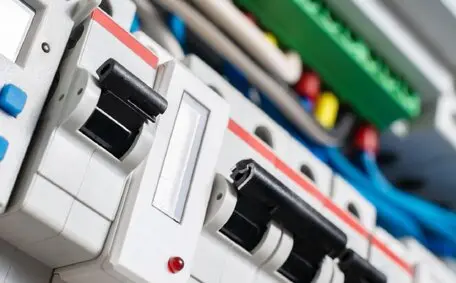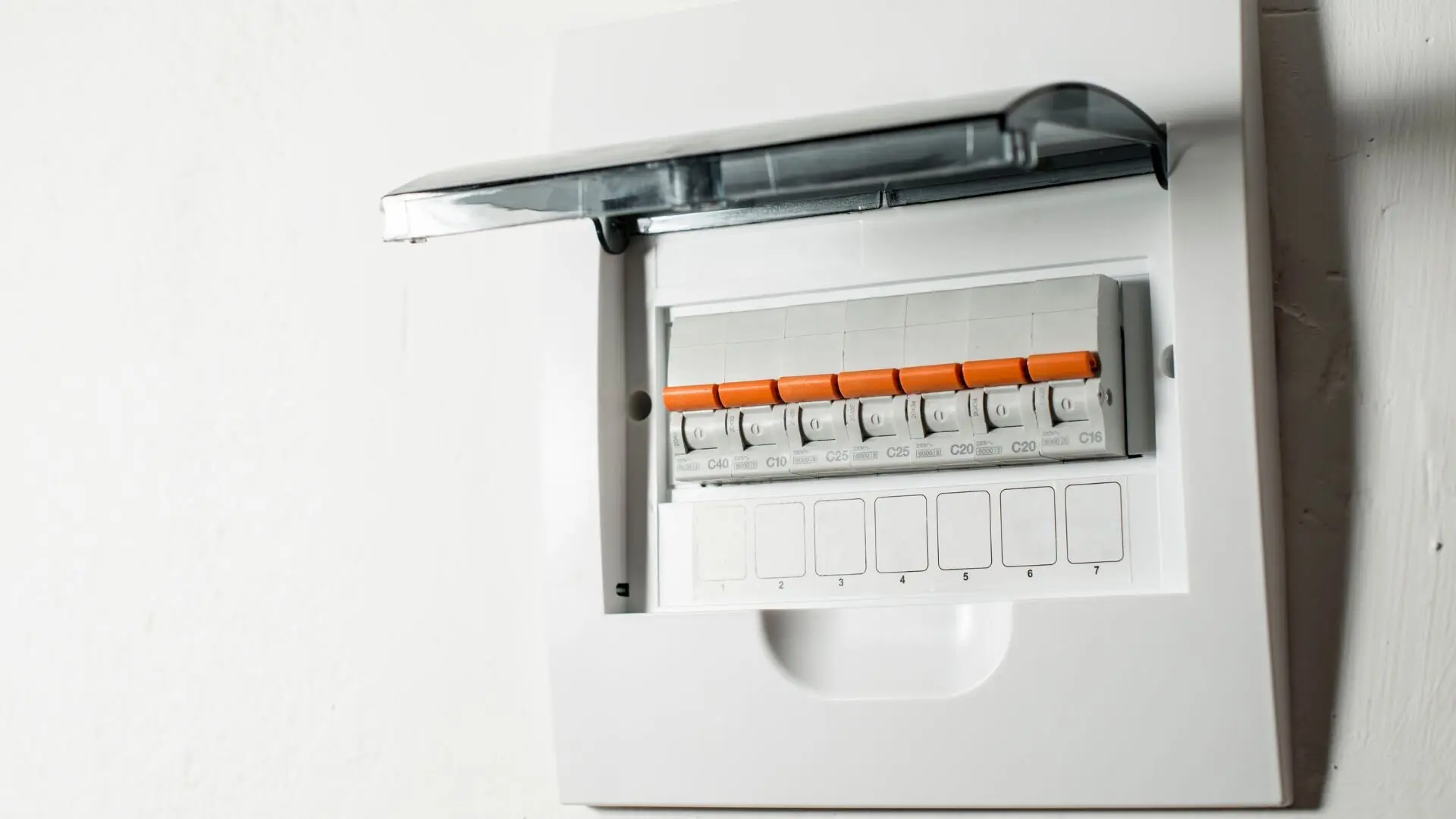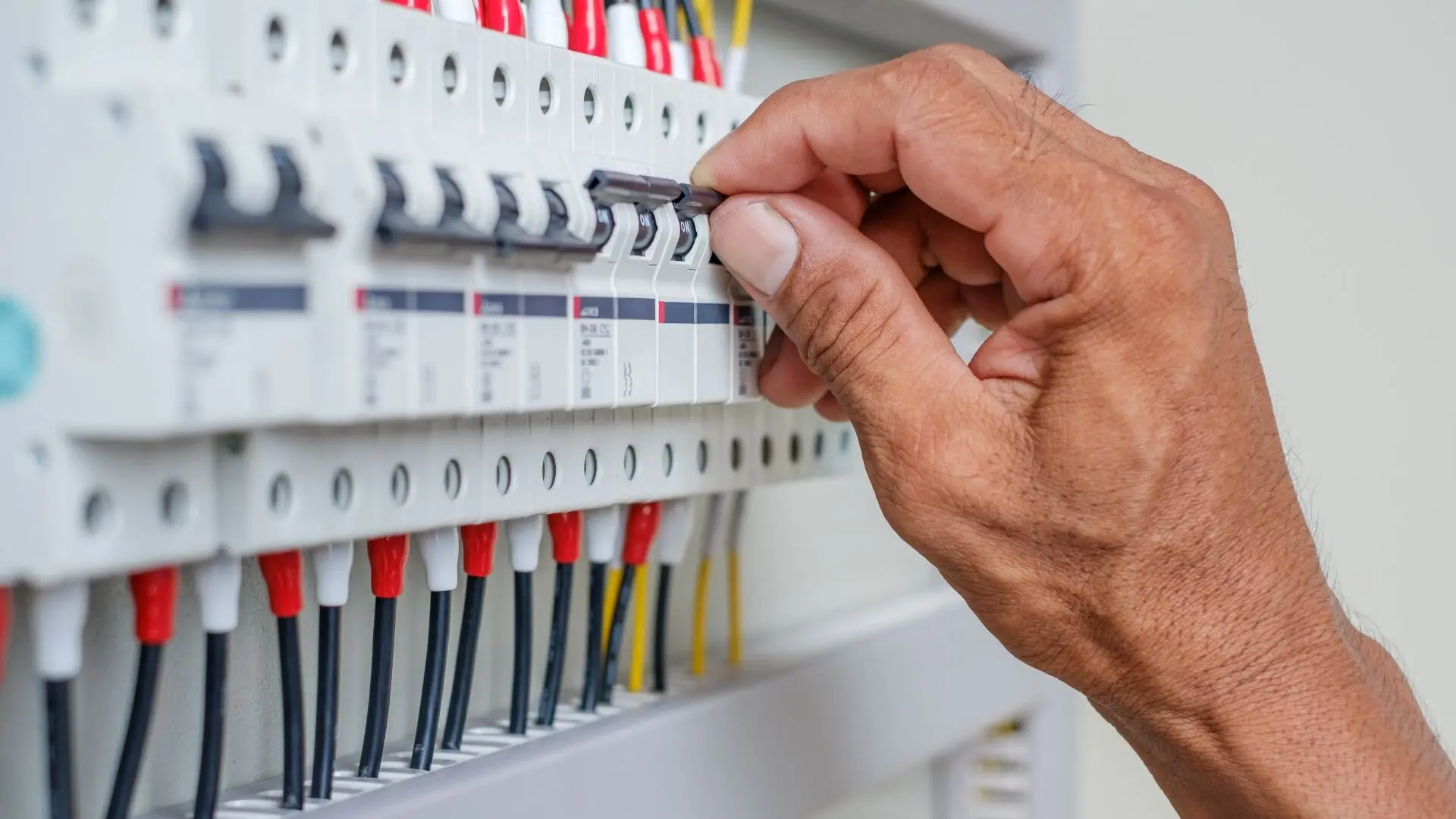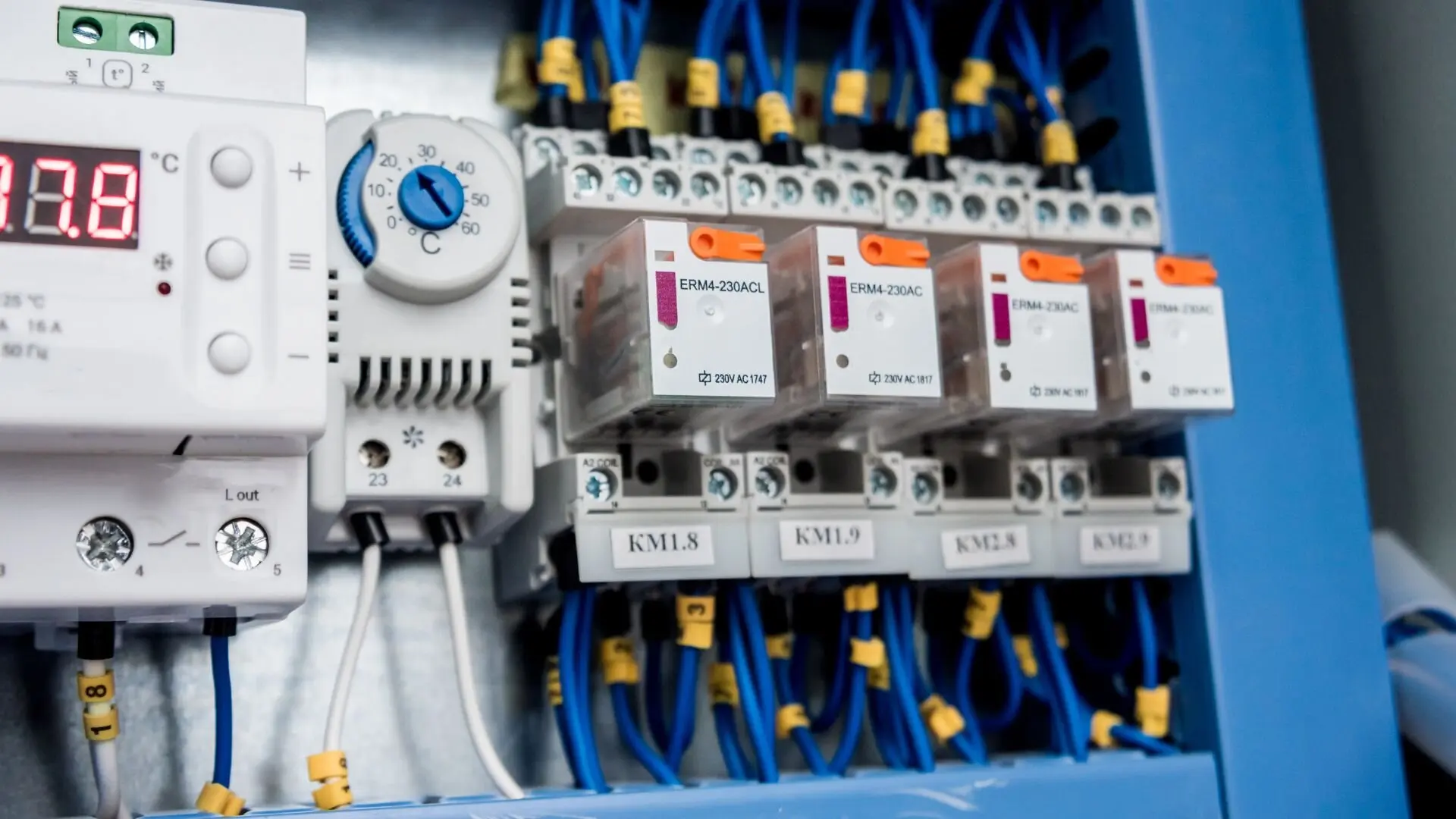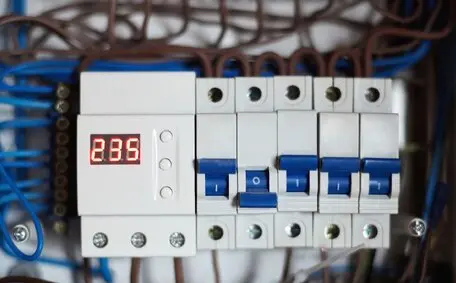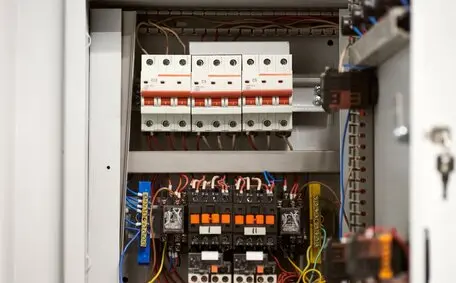Electrical safety is crucial for both our well-being and the protection of property. We depend on electricity every day, whether it’s at home, work, or through our devices. While it’s essential, it does come with risks like electric shock, electrocution, and fires.
Thankfully, safety switches are here to help prevent these disasters. In this article, we’ll look at why safety switches are essential, how they function, and their role in creating safer electrical environments at home and in the workplace.
What are Safety Switches?
Safety switches, also known as residual current devices (RCDs), are electrical safety devices designed to protect people and property from the hazards of electric shock and electrical fires.
![2024 04 Safety Switches In Box Safety Switches Box]()
Unlike circuit breakers and fuses, which primarily protect electrical circuits from overloads and short circuits, safety switches are specifically designed to detect and respond to electrical leakage currents. Safety switches constantly monitor the flow of electricity through a circuit and compare the current flowing in and out.
There are several types of safety switches, including RCDs (residual current devices), RCBOs (residual current circuit breakers with overcurrent protection), and SPDs (surge protection devices). Each type serves a specific purpose: protecting against different electrical hazards.
How Do Safety Switches Work?
Safety switches operate by continuously monitoring the flow of electricity in a circuit and comparing the current flowing in through the active wire with the current flowing out through the neutral wire. In a properly functioning electrical system, the current flowing in should be equal to the current flowing out.
However, when an electrical fault occurs, such as a person accidentally touching a live wire or a faulty appliance causing a leakage current, some of the current flowing in may not return through the neutral wire. Instead, it may find an alternative path to the ground, such as through a person’s body or a faulty appliance.
Safety switches are designed to detect this imbalance in the current flow. If the difference between the incoming and outgoing current exceeds a predetermined threshold, the safety switch will instantly trip and disconnect the power supply to the affected circuit. This rapid response within milliseconds helps prevent electric shock, electrocution, and potential electrical fires.
Safety switches provide an essential layer of protection against electrical hazards, safeguarding both people and property through continuous monitoring of the current flow and automatic disconnection of the power supply in case of a fault.
Why are Safety Switches Important?
Safety switches are crucial components in any electrical system, protecting against the dangers of electric shock, electrocution, and electrical fires.
One primary reason for installing safety switches is to protect people from the potentially fatal consequences of electric shock. When someone comes into contact with a live wire or faulty appliance, the safety switch detects the leakage current. It immediately disconnects the power supply, minimising the risk of severe injury or death.
![2024 04 Switching Circuit Breakers On Breaker Box Switching Circuit Breakers Breaker Box]()
Another significant benefit of safety switches is their ability to prevent electrical fires caused by faulty wiring or malfunctioning appliances. Electrical faults, such as short circuits or overheating, can quickly lead to fires that can spread rapidly and cause extensive property damage. Safety switches detect these faults and disconnect the power supply before a fire can start, reducing the risk of property damage and potential loss of life.
Compliance with electrical safety regulations and standards is a legal requirement in Australia. The installation of safety switches is mandatory in certain circumstances, such as in new residential buildings and properties undergoing significant renovations. Adhering to these regulations not only ensures the safety of occupants but also helps property owners avoid costly fines and legal liabilities.
Common Causes of Electrical Faults
Electrical faults can occur for various reasons, posing significant risks to safety and property. One common cause is damaged or frayed electrical cords and wires. Over time, the insulation on these conductors can deteriorate, exposing live wires and increasing the risk of electric shock or fire. Another frequent culprit is faulty electrical appliances and equipment. Malfunctioning devices can lead to short circuits, overheating, and electrical leakage, which can trigger safety switches and cause power outages.
Water or moisture intrusion into electrical systems is another hazardous situation that can result in electrical faults. Moisture can cause corrosion, short circuits, and damage to electrical components, creating a potentially dangerous environment.
Lastly, overloaded power outlets and circuits can also contribute to electrical faults. When too many devices are connected to a single outlet or circuit, the excessive current draw can lead to overheating, increasing the risk of fire and tripping safety switches.
Installation and Maintenance of Safety Switches
Getting safety switches installed correctly is paramount. Make sure a qualified and licensed electrician handles it. This ensures they’re wired up correctly and fit your existing electrical system. Trying to do it yourself without the right know-how might lead to mistakes, which can reduce their effectiveness in keeping you safe.
Regular Testing and Maintenance
Regular testing and maintenance of safety switches are essential to ensure their ongoing reliability and performance. Testing safety switches every three months is recommended by pressing the "test" button on the device. This action simulates an electrical fault, and the safety switch should immediately trip, cutting off the power supply. If the safety switch fails to trip during the test, it may indicate a malfunction, and a licensed electrician should be contacted for further assessment and replacement if necessary.
Recommended Locations for Installation
Safety switches should be installed throughout homes and workplaces in strategic locations to provide comprehensive protection. In residential properties, safety switches are typically installed in the main switchboard and sub-boards, covering all power and lighting circuits. In workplaces, safety switches should be installed in areas where electrical equipment is used, such as workshops, kitchens, and outdoor spaces. It is also advisable to install safety switches in specific locations prone to electrical hazards, such as bathrooms, laundries, and pool areas, to provide an added layer of protection.
Safety Switch Regulations in Australia
In Australia, electrical safety is governed by standards and regulations designed to minimise the risk of electrical accidents and fires. These standards, such as AS/NZS 3000 (the "Wiring Rules"), outline the requirements for electrical installations, including the use of safety switches.
![2024 04 Different Electrical Components With Safety Switch Electrical Components Safety Switch]()
Legal Requirements for Installing Safety Switches
In Australia, you must install safety switches in certain situations. For homes, they’re required on all power and lighting circuits in new builds and during major renos. Commercial properties have different rules depending on the location, but safety switches are usually a must in high-risk areas and for specific equipment.
Penalties for Non-Compliance
If you don’t follow safety switch rules, you could face hefty fines and legal issues. The penalties can change based on where you are and how serious the non-compliance is. Also, not following regulations can void your insurance if there’s an electrical accident or fire.
Partnering with Bright Force Electrical for Electrical Safety
At Bright Force Electrical, we are a trusted and experienced electrical service provider dedicated to ensuring the safety of your home or workplace through expert electrical solutions. Our team of highly skilled and licensed electricians has established Bright Force Electrical as a leader in electrical safety.
Installing and maintaining safety switches is one of our specialties. Our skilled electricians can evaluate your property’s electrical setup and suggest the best safety switch solutions. We handle professional installation to make sure you’ve got top-notch protection from electrical hazards. Plus, we offer regular testing and maintenance services to keep these vital devices running smoothly.
We are your trusted partner for all your electrical safety needs, including safety switch installation, testing, and expert advice. Contact us today to schedule a consultation and take the first step towards safeguarding your home or workplace from electrical risks. With Bright Force Electrical by your side, you can have confidence in the safety and reliability of your electrical system.
Frequently Asked Questions about Safety Switches
What is the difference between a safety switch and a circuit breaker?
While safety switches and circuit breakers are designed to protect electrical systems, they serve different purposes. Circuit breakers primarily protect against overloads and short circuits, preventing damage to electrical wiring and appliances. On the other hand, safety switches protect people from electric shock by detecting leakage currents and quickly disconnecting the power supply.
Can safety switches prevent all electrical accidents?
While safety switches provide a crucial layer of protection against electrical hazards, they cannot prevent all electrical accidents. Safety switches are designed to detect leakage currents and disconnect power quickly. Still, they may not protect against all types of electrical faults, such as those caused by damaged or exposed wiring. It is essential to use safety switches in conjunction with other electrical safety measures, such as regular electrical maintenance and the use of appropriate electrical equipment.
How often should safety switches be tested?
To ensure they function correctly, safety switches should be tested every three months. Testing involves pressing the "test" button on the safety switch, which simulates an electrical fault. The safety switch should immediately trip, cutting off the power supply. If the safety switch fails to trip during the test, it may indicate a malfunction, and a licensed electrician should be contacted for further assessment and replacement if necessary.
Are safety switches expensive to install?
The cost of installing safety switches varies depending on factors such as the size of the property, the number of circuits requiring protection, and the electrician’s fees. However, the cost is relatively minor compared to the potential consequences of electrical accidents, such as personal injury, property damage, and legal liabilities. Many jurisdictions offer incentives or rebates for installing safety switches, making it more affordable for property owners to upgrade their electrical safety measures.
Can safety switches be installed in older properties?
Yes, safety switches can be retrofitted into older properties, even if they were not installed initially during construction. A licensed electrician can assess the existing electrical system and determine the best approach for installing safety switches to ensure compliance with current electrical safety standards and regulations. Upgrading older properties with safety switches is a wise investment in electrical safety and can provide peace of mind for occupants.
